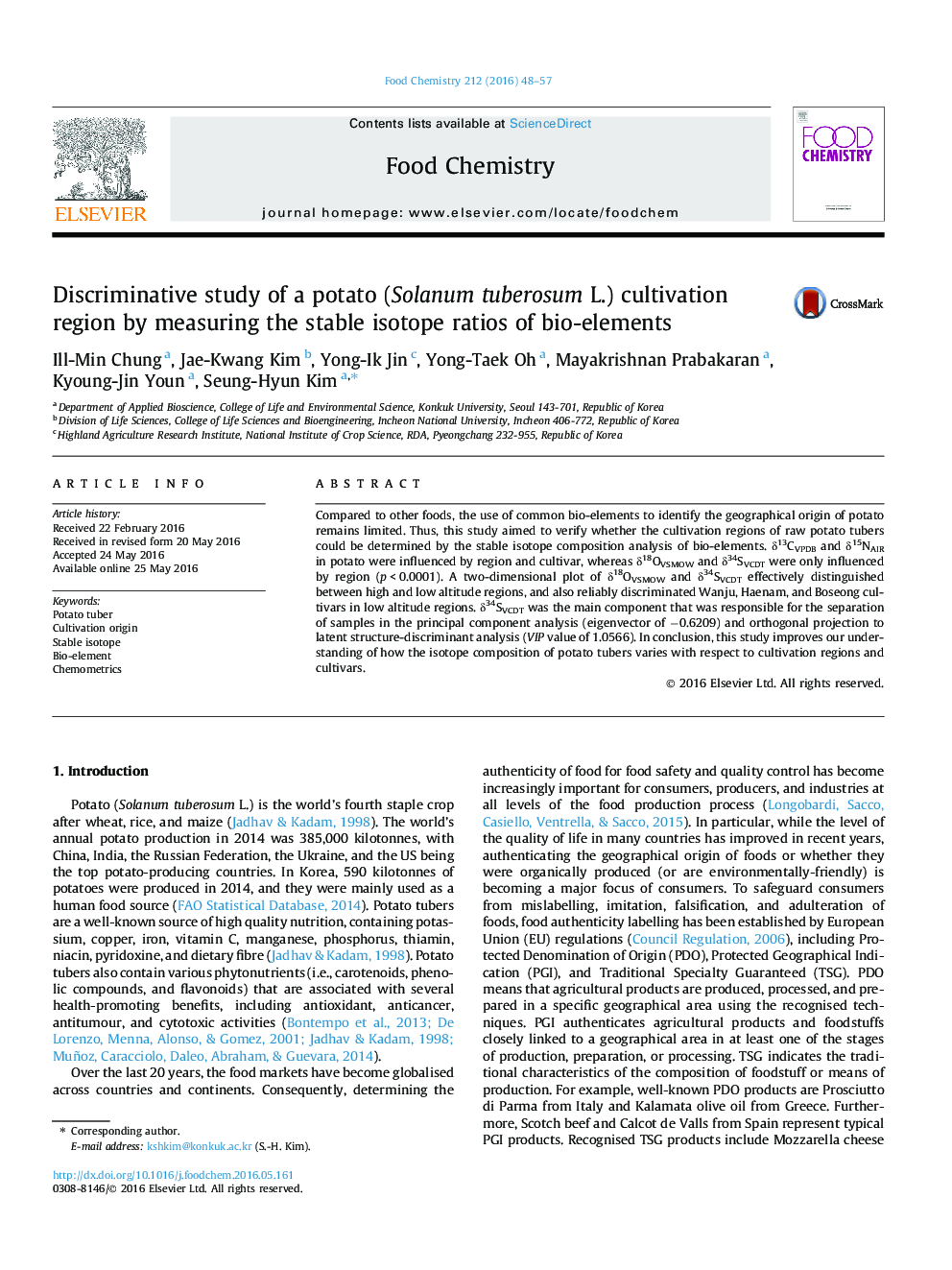| Article ID | Journal | Published Year | Pages | File Type |
|---|---|---|---|---|
| 1185026 | Food Chemistry | 2016 | 10 Pages |
•Stable isotope composition varied with cultivation regions and cultivars.•Combination of O and S isotopes effectively distinguishes cultivation regions.•Multivariate analysis can achieve classification of potato cultivation regions.•δ34SVCDT is the key component for the discrimination of potato geographical origin.
Compared to other foods, the use of common bio-elements to identify the geographical origin of potato remains limited. Thus, this study aimed to verify whether the cultivation regions of raw potato tubers could be determined by the stable isotope composition analysis of bio-elements. δ13CVPDB and δ15NAIR in potato were influenced by region and cultivar, whereas δ18OVSMOW and δ34SVCDT were only influenced by region (p < 0.0001). A two-dimensional plot of δ18OVSMOW and δ34SVCDT effectively distinguished between high and low altitude regions, and also reliably discriminated Wanju, Haenam, and Boseong cultivars in low altitude regions. δ34SVCDT was the main component that was responsible for the separation of samples in the principal component analysis (eigenvector of −0.6209) and orthogonal projection to latent structure-discriminant analysis (VIP value of 1.0566). In conclusion, this study improves our understanding of how the isotope composition of potato tubers varies with respect to cultivation regions and cultivars.
